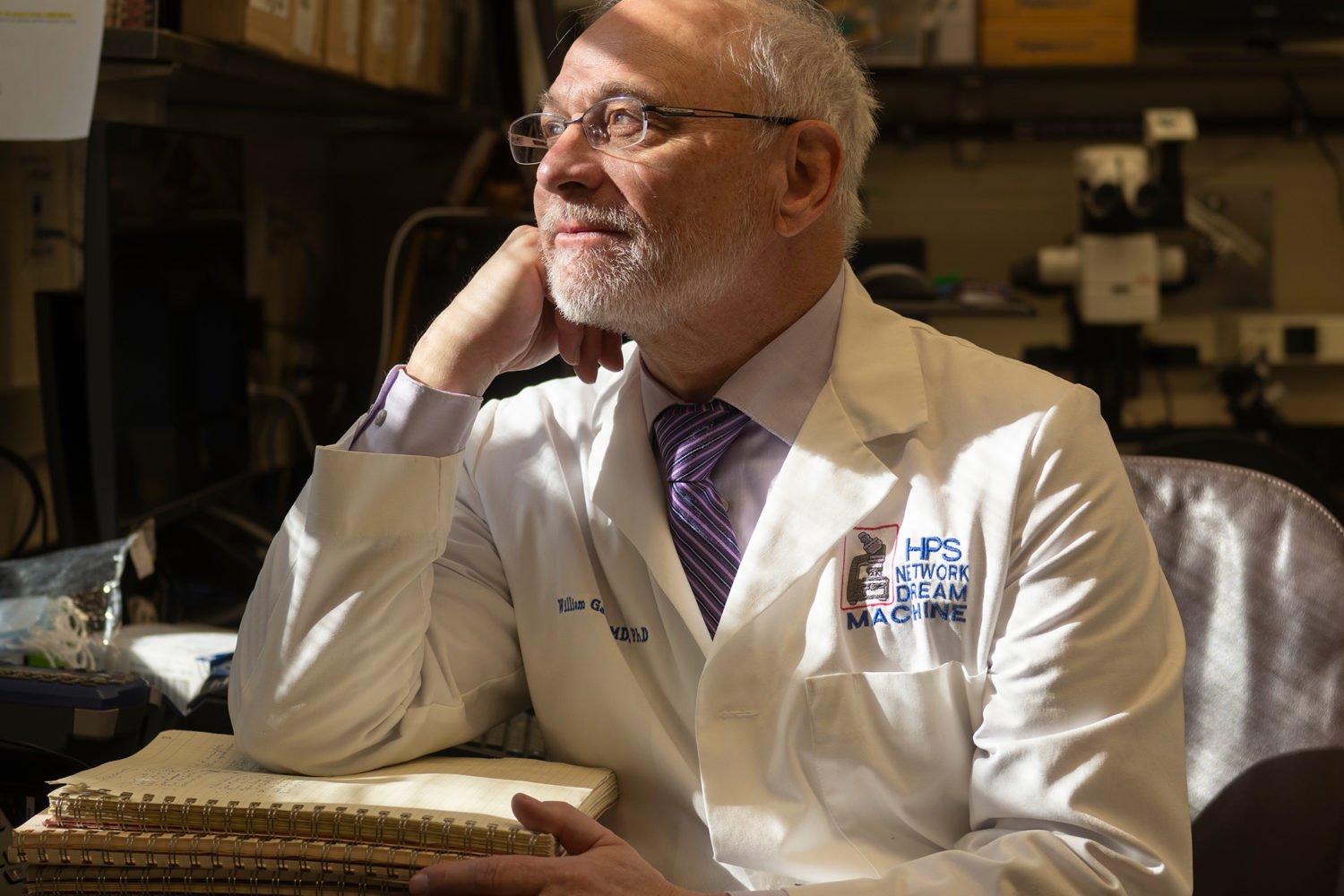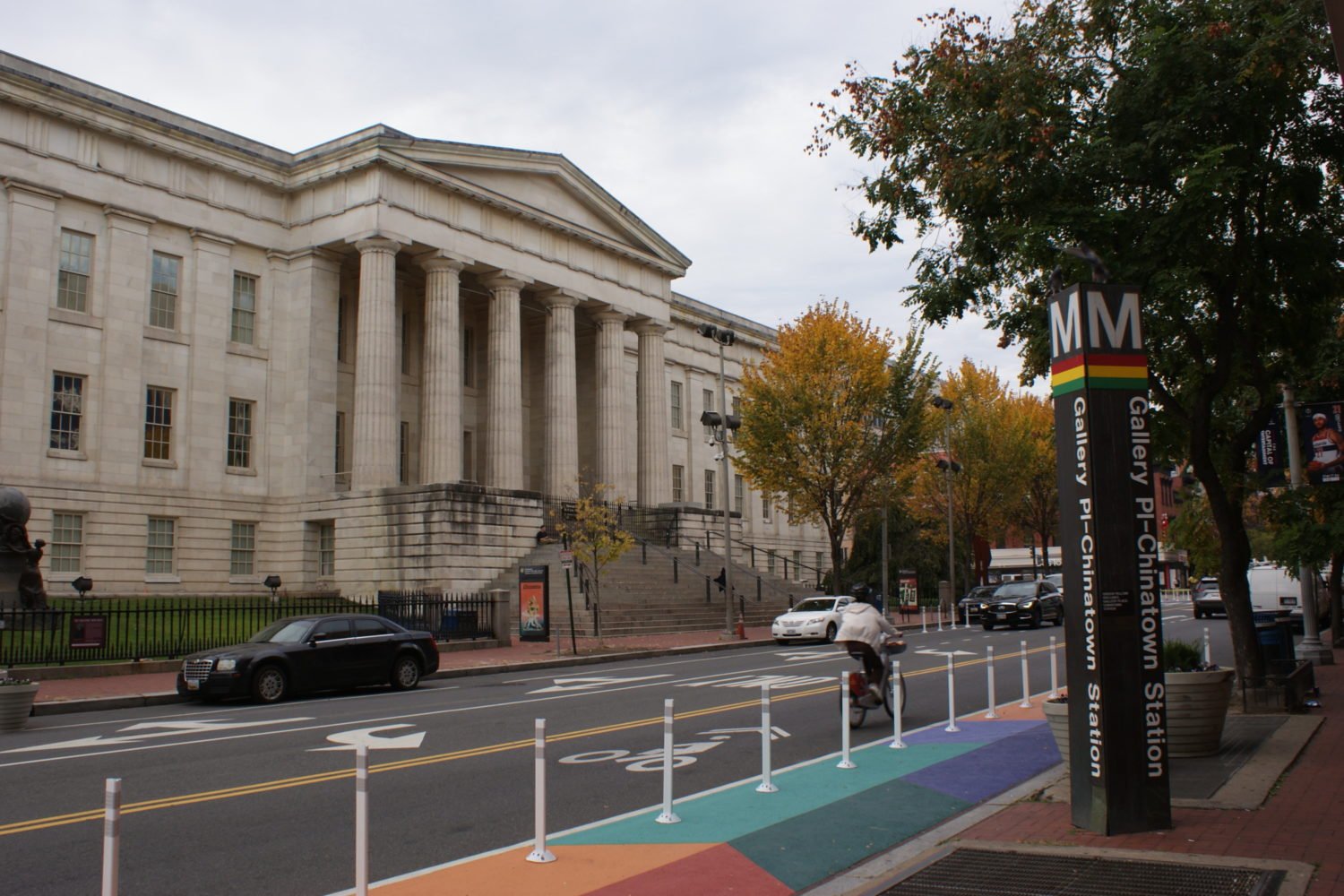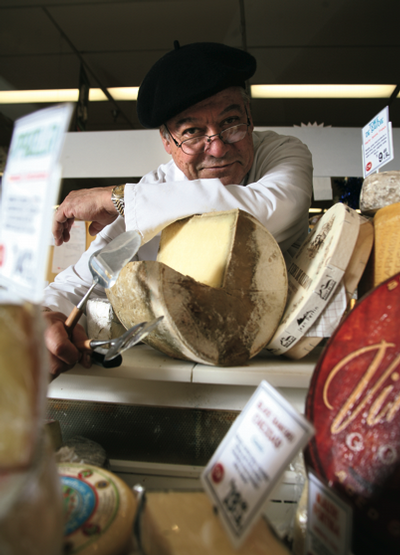
The modern era for the cheese course at Washington restaurants dawned with the Kennedy administration. In 1961, when newly inaugurated president John F. Kennedy hired René Verdon as White House chef, the event sparked a boom in local French restaurants.
From the ambitious Rive Gauche to less formal places like Le Bistro, every French restaurant had a cheese course. At Rive Gauche, the selection of cheeses matched what you would find at a Michelin one-star in Paris. At Chez Odette, a raffish Georgetown spot where a grumpy proprietress dished out dry quiche, the cheese plate was made up of foil-wrapped portions of La Vache Qui Rit (Laughing Cow).
Wine-and-cheese parties grew popular in the Kennedy years and flourished through the 1970s. This alternative to the cocktail party could be as casual as jugs of Almaden Mountain Chablis and Gallo Hearty Burgundy with crackers and supermarket cheeses or as elegant as regional French wines with cheeses selected to complement each vintage.
The late French Market in Georgetown delivered custom-cut meats and cheeses to Jacqueline Kennedy when she and her husband lived in that neighborhood, but it was the marketing of wine and cheese by two wine merchants that advanced the city’s taste for cheese.
The Georgetown Wine and Cheese Shop was the indulgence of William Fitzgerald, a banker and diplomat who launched the enterprise so he and his friends could buy wines and spirits at wholesale prices. There, a 20-year-old Guatemalan, Carlos Estrada, started in the cheese trade in 1965.
Up Wisconsin Avenue in DC’s Glover Park, the tiny counter of La Cheeserie in Calvert Liquors was manned by Tony Batista, a multilingual Portuguese who could simultaneously chat up an Italian, a Spaniard, and a Parisian without missing a beat among languages. La Cheeserie was the brainchild of Marvin Stirman, Calvert’s owner, and Alfio Moriconi, the store’s dynamic wine buyer.
Their stroke of genius in the marketing of wine and cheese was the creation of a club called Les Amis du Vin. For an annual fee, members received a fine British magazine called Wine plus the opportunity to buy wines at reduced prices and attend winetastings and dinners at some of the District’s best restaurants. At seated tastings, wines were partnered with cheeses and occasionally charcuterie. And it was rare that one of the organization’s monthly dinners didn’t include a cheese course.
An old adage among British wine merchants is “Buy on an apple, sell on cheese.” It means that the buyer should taste wines he is considering for purchase after cleansing his palate with a bite of tart apple, the better to detect flaws in the wine. But a seller should encourage customers to taste wine with cheese, which coats the palate and has the effect of increasing the fruit in a wine as well as masking flaws. After a generous bite of Brie, you’ll be surprised how good most ordinary wines taste.
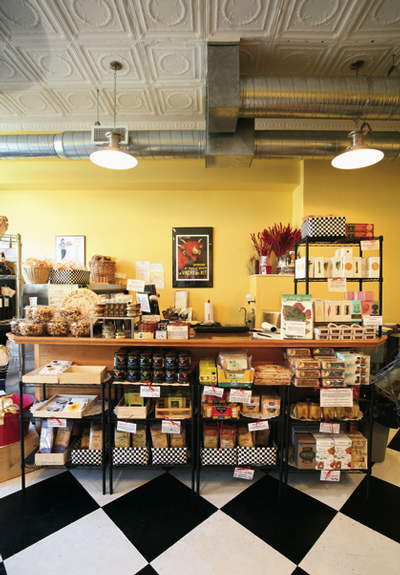
The cheese plate was a requisite of fine dining in restaurants and homes when, in the late 1980s, along came the food police to frighten baby boomers experiencing the first twinges of middle age. According to the food police, ingesting animal fat led to clogged arteries and an early death.
Retail sales were little affected, says Carlos Estrada, who left the Georgetown Wine and Cheese Shop in 1985 to direct the new La Cheeserie at Calvert Woodley, where he remains Washington’s number-one cheese merchant. But fear of fat rendered the cheese course in restaurants a thing of the past. It was clear that the party was over when the impressive selection of cheeses displayed on a massive silver tray disappeared from Le Lion d’Or, the city’s most successful haute-cuisine restaurant during the 1970s and ’80s.
But not for long. In 1993 a string of restaurants by what would become a who’s who of Washington chefs opened: Jeffrey Buben’s Vidalia; Michel Richard’s Citronelle; the late Jean-Louis Palladin’s Watergate bistro, Palladin by Jean-Louis; Bob Kinkead’s fish house, Kinkead’s; Ann Cashion and José Andrés’s Jaleo.
In March of 1993, Gerard Pangaud, the youngest chef ever to earn a two-star rating in the Michelin Guide—for his namesake restaurant on the outskirts of Paris—opened Gerard’s Place on DC’s McPherson Square. Apparently, news that the cheese course was finished in Washington had failed to reach Pangaud: Prefacing the offerings on the dessert menu was the line “A Selection of Cheeses.”
Pangaud had lots of takers for his cheese course among the French businessmen and diplomats who indulged in Michelin two-star cuisine at bistro prices. Not to be outdone, Jean-Louis Palladin offered a cheese course at Palladin by Jean-Louis, which opened a few months after Gerard’s Place.
And when Michel Richard, who had earned a national reputation at his Los Angeles restaurant, Citrus, opened Citronelle, on the menu was a cheese plate. Richard wasn’t just following a trend: The cheeses were as much for his delectation as for the public’s—one reason they were always of impeccable quality.
Years later, when Roberto Donna installed a state-of-the-art, temperature-and-humidity-controlled cheese cellar at Galileo, Richard became notorious for dropping by during off-hours, walking into the cellar, and emerging with a couple of whole cheeses, devouring one on the spot and tucking the other into his pocket for later consumption.
Donna was a generous competitor to his friends: Jeffrey Buben purchased Vidalia’s initial cheese platters from Donna. Now Vidalia and Buben’s Franco-American Bistro Bis on Capitol Hill offer the most impressive assortments of cheese in Washington, supplied by the Artisanal Cheese Center in Manhattan.
It has been 15 years since Gerard Pangaud returned the cheese course to local French tables. Today diners expect any fine-dining venue in Washington, whether Modern American or Italian, to offer an intelligently selected and well-kept assortment of cheeses. You know the cheese course has entered the mainstream when a selection of excellent American farmstead cheeses is a fixture on the menu of the local upscale saloon chain Clyde’s.
And if you need more convincing: At the White House dinner hosted by President and Mrs. Bush for Queen Elizabeth II and Prince Philip, the fourth course of executive chef Cristeta Comerford’s formal dinner was a trio of English farmhouse cheeses garnished with a salad of arugula, Savannah mustard greens, and mint romaine, dressed with a Champagne vinaigrette.
Shopping for Cheese
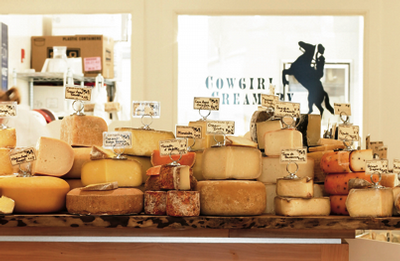
Thanks to the proliferation of specialty supermarkets and cheese boutiques—and of artisanal cheesemakers in this region and elsewhere—more fine cheeses are available in the Washington area than ever before. If you take a little time each week to read about cheese in a book such as Steven Jenkins’s Cheese Primer (see “Cheese by the Book," below), then go out and buy one that’s caught your interest, in a few months you will likely know more about the subject than many of the clerks behind the counters of supermarket cheese departments or in some cheese shops. But good advice is available.
The following survey of cheese departments in specialty markets, liquor stores, and cheese shops should let you know what to expect in terms of selection, house specialties, and service.
Balducci’s (6655 Old Dominion Dr., McLean; 703-448-3828). With its first store on New Mexico Avenue in Northwest DC, what was then called Sutton Place Gourmet introduced the specialty-grocery concept to Washington. Now Balducci’s—a name it acquired by buying a venerable Greenwich Village fancy grocery—the chain seems less exciting because of the competition that has arrived in recent years.
The cheese counter is brightly lit and echoes the spare, modern lines of the rest of the market. Prices are slightly higher than at Whole Foods but lower than those at Dean & DeLuca. This Balducci’s—there are also operations in Alexandria and Bethesda—gives relatively short shrift to artisanal American cheeses. The international selection is more than adequate but largely predictable. One very pleasant surprise was a Petit Billy, a creamy goat’s-milk cheese with an elegantly delicate flavor from the Loire region of France. “Little Billy,” by the way, refers not to the goat on the label but to the village where it’s produced, which is pronounced “bee-yee.”
Cheesetique (2411 Mount Vernon Ave., Alexandria; 703-706-5300). Now three years old, this tiny, neat-as-a-pin storefront is the first independent cheese shop in the area. Like a fromagerie in a French village, its cheeses are impressive not for the number of choices but because the care taken in their selection ensures optimum quality.
Owner Jill Erber has developed an intelligent ordering strategy to see that the most fragile cheeses are in peak condition when purchased. A cow’s-milk banon, rustically packaged in folded chestnut leaf tied with straw, was as good an example of the cheese as you’ll find outside France. Equally impressive were two more-delicate cheeses made from goat’s milk, a cylindrical chabichou “Le Chevrot” and a dainty disk of pale yellow cabécou.
Cowgirl Creamery (919 F St., NW; 202-393-6880). I first visited Cowgirl Creamery in search of Maroilles, which I had despaired of finding once Dean & DeLuca quit stocking it. I didn’t find it but was consoled when a spritely clerk named Katie not only knew the cheese but expressed regret that she had neither Livarot nor Pont L’Eveque, two cheeses somewhat similar to Maroilles, in stock.
In two rooms with lustrous wood floors and bright-white light that illuminates the cheeses, Cowgirl Creamery makes shopping for cheese a pleasure. The knowledge and passion for the product displayed by the young women on staff is impressive—and they share it without pretentiousness. While the European cheeses are shipped from such places as the famous Neal’s Yard Dairy in London, this is the place to discover the greatness of America’s artisanal cheeses. You can start with Red Hawk, a triple-crème washed-rind marvel created by the creamery’s namesake cowgirls, Peg Smith and Sue Conley. It’s an American cheese to serve a friend from France.
If Cowgirl Creamery sometimes charges slightly more than the competition, the brief education in cheese, the generous tasting samples—cut twice to avoid an air-dried exterior—and the personalized service are worth it. For great American cheeses and a pleasurable time, Cowgirl Creamery is hard to beat.
La Cheeserie at Calvert Woodley (4339 Connecticut Ave., NW; 202-966-4400). For pantry staples—Gruyère to top the potato gratin, Pecorino to grate over the perciatelli tossed with a Neapolitan ragu—La Cheeserie gives you the most bang for your buck. Its prices usually are lower than those at specialty supermarkets, and its Wednesday ad in the Food section of the Washington Post features popular cheeses at bargain prices. Dedicated cooks watch for ads featuring Parmigiano-Reggiano at $9.99 a pound and buy accordingly.
This is a high-volume operation selling almost a ton of cheese a week, but manager Carlos Estrada insists that every large-format cheese be cut and wrapped to order for each customer. This’s why a Gruyère or a Gorgonzola naturale purchased here has more pronounced flavors than the prepackaged versions sold elsewhere. La Cheeserie’s weakness is its dearth of American farmstead cheeses.
Whole Foods Market (2700 Wilson Blvd., Arlington; 703-527-6596). The best cheese department in the Whole Foods chain used to be the one on Wisconsin Avenue in DC’s Glover Park. But the range and overall quality of cheeses at this branch in Arlington’s Clarendon neighborhood now make it the peer of the flagship DC store.
Whole Foods offered an impressive assortment of Spanish cheeses before other stores realized there were great cheeses in Spain beyond Manchego. Today its inventory is a buffet of the art of Iberic cheesemaking. If you want to taste why Manchego is Spain’s most famous cheese, compare a wedge made from pasteurized sheep’s milk with the splendidly sharp, aged Manchego “El Trigal” made from raw sheep’s milk.
There’s also a fine balance among cheeses from France, Italy, and the United States. You might see a stack of terra-cotta ramekins nestling chestnut-leaf-wrapped Saint Marcellins or boxes of the splendid Langres, an aromatic, meltingly creamy cheese from Champagne that is, in author Jenkins’s words, “stunningly delicious.”
The clerks here are affable, if capable mainly of offering only rudimentary advice. But the inventory, pricing, and consistent quality make Whole Foods’ cheese departments the best among the chain specialty markets in the area.
Wegmans (11620 Monument Dr., Fairfax; 703-653-1600). Wegmans offers gastronomy on a big-box scale. But beyond its colossal size, there’s less to the emporium than meets the eye. In refrigerated bins along its walls and at an imposing four-sided counter, Wegmans creates the illusion that it stocks every cheese commercially available in the United States. It also displays some things that should not be available anywhere: “cheesecakes” made of stacked wheels of Brie slathered with commercial fruit preserves.
Prices at Wegmans are competitive with those at Whole Foods—Parmigiano-Reggiano at $13.99 a pound, Gruyère at $11.99—but the salespeople are more shelf stockers than merchants. I made four leisurely laps around the counter and wasn’t asked once if I needed help. And some cheeses have been in less than pristine condition: The cracked rind of a tomme from Provence indicated it was well past its prime, and a goat’s-milk cheese called Aline des Vignes—in the display case five days after its sell-by date—had a large circle of mold beneath its label.
Dean & DeLuca (3276 M St., NW; 202-342-2500). When Dean & DeLuca opened in 1992, its cheese counter was unmatched in Washington: The Manhattan fromagerie’s selection, quality, and service mitigated its Big Apple prices. Today—when competitors offer identical cheeses for less, it no longer stocks the lesser-known cheeses it once was known for, and its counter people are less informed than they should be—the most memorable thing about this cheese department is its astronomical prices.
Dean & DeLuca reacquainted me with Maroilles, a French cheese that had been unavailable in Washington. The experienced cheesemonger at the counter would sell you half a Maroilles, but only if the cheese had reached its peak of ripeness: Maroilles, like any other soft cheese that needs time to achieve maturity—Brie, Livarot, Pont-l’Eveque—won’t ripen further once it is cut. But Maroilles is no longer predictably available at D&D. Ask about its availability—as I did on four visits—and you’re likely to be asked to repeat its name.
Dean & DeLuca still offers less frequently encountered cheeses—artisanal goat cheeses from France and certified organic Parmigiano-Reggiano—but the presence of Cheesetique and Cowgirl Creamery has dulled its star considerably. It doesn’t help when it displays cheeses clearly past their prime, such as a large Pont l’Eveque whose gray, cracked-to-bits crust was the telltale mark of a cheese that had expired.
Cheese in Restaurants
In luxury restaurants and bistros, in ristoranti and trattorie, the cheese course in Washington is flourishing. In a few cases during this survey—and almost exclusively at lunch—the assortment arrived at table still chilled from the refrigerator, but the cheeses on almost every plate were in peak condition.
The only times I had occasion to complain was when the chef couldn’t resist adding his creative touches to the plate, such as splashes of balsamic vinegar or puddles of fruit mustard, miniature Melba toasts instead of freshly cut slices of a baguette, or a runny cheese in the guise of a “banana split.” A great cheese at peak condition needs no ornamentation.
With the cheese course, bread serves two functions: as a palate cleanser between cheeses and as a conveyance for runny cheeses that are difficult to eat with a knife and fork. Cheeses that melt out of their rinds at room temperature should be placed atop the slice of baguette rather than spread on the bread.
Note that the cheese course served in local French restaurants invariably includes Camembert—it’s an article of faith among the French. And in its original form, artisanally made from raw milk, it lives up to its reputation: Nobody who has enjoyed François Durand’s small-production Camembert in Normandy will be satisfied with a mass-produced Camembert made from pasteurized milk, which is what is served here.
Don’t hesitate to order a single cheese course to share; a plate with three to five selections should provide a pleasant ending to a meal. The cheese selections described here were those served when the survey was conducted and may have changed.
La Chaumière (2813 M St., NW; 202-338-1784). Cheese course: $11.50. The selection here is as reliably consistent as chef Patrick Orange’s bistro classics and the contemporary improvisations that highlight his daily specials. Cheeses arrive at table in peak condition and at room temperature. The assortment sampled for this survey was impeccable in quality and conservative in selection. The requisite Camembert, at its peak of ripeness, was as inoffensive as any version mass-produced from pasteurized milk can be. Highlights of the four-cheese assortment were a tangy Saint-Nectaire and a subtly sweet pyramide chevrot.
Gerard’s Place (915 15th St., NW; 202-737-4445). Cheese course: $21. At the restaurant that triggered the return of the cheese course to Washington menus, a wedge of industrial Camembert is still a fixture. More inspired selections at one lunch were a splendid Pont l’Eveque at its peak of ripeness and a well-kept Stilton. A novelty was the Cocoa Cardona, a firm, gently flavored goat cheese from Wisconsin whose rind is coated with cocoa powder. Although the course was ordered at the beginning of the meal to ensure that it would be served at room temperature, the portions arrived chilled.
The Oval Room (800 Connecticut Ave., NW; 202-463-8700). Cheese course: $14. No complaints about quality or temperature here. On the neatly arranged plate was a portion of Picon, a very fine cave-aged bleu from Spain; a rich, aged Gouda from Holland; a mature Parmigiano-Reggiano; and a delicate Chevrot from France’s Loire Valley. But the chunk of Parmigiano rested in a puddle of what the menu described as 25-year-old balsamic vinegar.
While Italians unashamedly cross-market two of the treasures of the Emilia-Romagna region—the sweet-sour vinegar of Modena and the regal cheese of Parma—no Modenese would splash a venerable Aceto Balsamico di Modena over a chunk of Parmigiano. For cheese, younger vinegar—three to six years old—is used, and then it is dispensed with an eyedropper. In Modena, 25-year-old balsamic vinegar is added in droplets to vanilla ice cream or parsimoniously drizzled over strawberries dusted with freshly ground black pepper; a teaspoonful is sometimes added to a glass of sparkling mineral water as a tonic.
Small pools of chestnut honey and apricot mustard lent color to the plate but did not enhance the cheeses.
Bistrot du Coin (1738 Connecticut Ave., NW; 202-234-6969). Cheese course: $8.50. The cheeses in this changing selection reside under a net-covered dome beside the reservation desk. The irrepressibly irreverent proprietor, Michel Verdon, has been known to deliver the cheese course wearing a gas mask. A recent assortment included the required industrial Camembert, which was bested by the far more richly flavored tomme de Savoie and a Morbier.
Clyde’s of Gallery Place (707 Seventh St., NW; 202-349-3700). Cheese plate, $10.95. This and other branches of the upscale saloon chain treat cheeses with respect—seasonal assortments arrive in peak condition and at room temperature. A recent platter featured portions of Point Reyes Original Blue, a pleasantly sharp, soft-textured, blue-veined cheese from California; a Vermont Shepherd, an aged cheese made from unpasteurized sheep’s milk; a mild Partridge Hill cheddar from New York state; and a montasio festivo from the Mozzarella Company in Dallas that was flat-flavored despite its dried-chili-rubbed rind. The plate was so generously garnished with grilled nut-raisin bread and seasonal house-made fruit preserves that the wedges of cheese looked skimpy.
Jaleo (2250-A Crystal Dr., Arlington; 703-413-8181). Cheese tapa, $7.50. The original Jaleo in DC’s Penn Quarter helped return the cheese course to Washington menus. In Spain, cheese is either a between-meal snack or a nibble before the first course. Traditionalists order Jaleo’s small plate of four cheeses—along with a ration of Serrano ham—to pick at while deciding what other tapas to have, but it’s also a pleasant complement to the last bit of wine in the bottle. The assortment is anchored by a young Manchego that’s sharp enough to cleanse the palate but not to overwhelm a simple red wine. It’s partnered with a relatively delicate Murcia, a smoky idiazábal from Basque country, and garrotxa, a goat’s-milk cheese from Catalonia.
Teatro Goldoni (1909 K St., NW; 202-955-9494). Cheese course: $10.50 per variety. Chef Fabrizio Aielli offers a selection of four cheeses and lets the diner choose one garnish among several to complement them. The cheeses, all impeccably kept and served at room temperature, included a Fontina d’Aosta, a Taleggio, a Pecorino Toscano, and an aromatic but gently flavored Gorgonzola dolce. A poached baby pear was a perfect companion to the Pecorino Toscano and Gorgonzola.
Palena (3529 Connecticut Ave., NW; 202-537-9250). Cheese course: $12. It would be the height of folly to have dinner here and forgo one of Ann Amernick’s splendid desserts in favor of a cheese course. The solution: Share a cheese course before dessert. Chef Frank Ruta offers a changing selection of the best cheeses on the market, so there’s no reason to tart up the plate with honey, nuts, marmalades, or other impediments to their enjoyment. Ruta’s only nod to trendiness is a few slices of raisin-nut bread instead of baguette. On a night when the five-cheese plate included a fine chèvre, aged Gouda, and a Queso Manchego, the showstopper was a wedge of Cashel Blue, a treasure from Ireland rightly considered one of the world’s finest mold-veined cheeses.
Bebo Trattoria (2250-B Crystal Dr., Arlington; 703-412-5076). Cheese course: $1.50 to $3.50 per ounce. The 15 cheeses on Roberto Donna’s list here wouldn’t have filled one shelf of his high-tech cheese cellar at Galileo. No order would be complete without a chunk of the sensational Parmigiano-Reggiano Vacca Rossa. The “red cow” of the name means it’s made from the milk of “red” cows, a rare breed whose milk is high in protein and butterfat. To taste it is to understand the greatness of Parmesan. Also recommended: the cave-matured Pecorino di Fossa, a spicy sheep’s-milk cheese; brinata, a mild cheese made from sheep’s milk; and Bûche Noir, a world-class goat’s-milk cheese made by Firefly Farms in Maryland.
For the dedicated student of cheese, Donna offers Brus, a sharp-flavored, powerfully aromatic soft cheese that’s a staple of thrifty households in Italy and southern France, where it’s known as fromage fort. This “strong cheese” is made by filling a jar with leftover cheeses, allowing the mixture to ferment, then stabilizing the results with a distilled spirit such as grappa or marc, or with wine. It’s not for the faint of heart.
Vidalia (1990 M St., NW; 202-659-1990). Cheese course: choice of three, $14; six, $24; additions to either, $3 each. A cheese course in a “New South” restaurant might seem an anomaly. Yet an excellent selection of cheeses has long been a staple here. Chef/owner Jeffrey Buben gets the cheeses for both Vidalia and his Franco-American Bistro Bis on Capitol Hill from the Artisanal Cheese Center in Manhattan. A recent selection included a gentle-to-a-fault Willow Hills Summer Tomme from Vermont, a rustic, tangy sheep’s-milk ibores from Spain, and a Hudson Valley “Camembert” from New York state that matched the dullness of a mass-produced French Camembert. All were at peak condition and served at room temperature.
Bistro Bis (15 E St., NW, in the Hotel George; 202-661-2700). Cheese course: choice of three, $14; six, $24; additions to either selection, $3 each. For the cheese aficionado, this is a candy store: Here you compose a cheese course from two dozen cheeses from the Artisanal Cheese Center in Manhattan. The cheese steward, Lateef Abney, will lead seekers to such sleepers as strachitunt, a blue-veined, cow’s-milk cheese from Lombardy, or the splendid sheep’s-milk Abbaye de Belloc. A recent plate comprised portions of perfectly mature Coulommiers—not runny but slightly bulging—a properly malodorous Munster from Alsace, and a pair of sheep’s-milk cheeses from the French Basque country, an Abbaye de Belloc and an Ossau-Iraty. Here you can enjoy a plate of cheeses as good as any you’ll find in this country.
Marcel’s (2401 Pennsylvania Ave., NW; 202-296-1166). Cheese course: $14. For generosity and intelligent selection, it’s hard to match chef Robert Wiedemaier’s cheese course. Its five changing portions recently included a rare local taste of the powerfully aromatic Chimay, a monastery cheese that is the rightful pride of Belgium; a flawless domestic goat cheese from Pipe Dreams Creamery; a Stilton in prime condition; and fromage de Savoie—what Reblochon made with pasteurized milk so it can be imported into the United States is now called.
Most of the cheeses are allowed to shine on their own merits, the exception being the lily-gilding treatment of Epoisses, a pungent cheese from Burgundy that at the peak of ripeness melts into a puddle at room temperature. Inexplicably, the chef presents it in a miniature boat-shaped dish as a faux banana split, diminishing both enjoyment of the cheese and appreciation for its selection.
Cheese by the Book
As with wine, acquiring a knowledge of cheese is like starting to learn a foreign language: You need the equivalent of a Berlitz phrase book to teach you enough of the basics to get you from the airport to your hotel—or in this case, from a bland American-made Munster to a pungent Munster from Alsace.
The best book is Steven Jenkins’s Cheese Primer (Workman Publishing, $16.95). Jenkins headed the cheese departments at such New York grocers as Dean & DeLuca and Balducci’s. His knowledge of and enthusiasm for the subject, conveyed through personal and historical stories, are lent credibility by his tough criticism of cheeses with inflated reputations.
Another celebrated Manhattan cheese seller, Rob Kaufelt, weighs in with The Murray’s Cheese Handbook (Broadway Books, $12.95). Coauthored with Liz Thorpe, this fairly new guide fills in some of the blanks in Cheese Primer, published in 1996.
Laura Werlin’s The New American Cheese (Stewart, Tabori & Chang, $35) profiles some of America’s finest artisan cheesemakers and offers recipes that capture the fresh exuberance of contemporary California home cooking. Werlin prefaces her recipes and profiles with a concise history of cheesemaking in America, beginning with the Pilgrims’ making cheese from the milk of goats that accompanied them on the Mayflower.
French Cheeses by Kazuko Masui and Tomoko Yamada (DK Publishing, $20) is a concise and—thanks to Yohei Maruyama’s photographs of more than 350 cheeses—visually appealing reference book, complete with suggestions of French wines that complement them.
Max McCalman oversees the cheese services at Picholine and Artisanal, two Manhattan restaurants famous for their small-production cheeses. With coauthor David Gibbons, McCalman has produced The Cheese Plate (Clarkson Potter Publishers, $35), a manual for composing cheese courses at home as well as selecting at a restaurant. It covers everything from the history of cheese to “How to Give a Cheese a Bath”—a way to resuscitate washed-rind cheeses such as Pont L’Eveque and Chimay.
Weighing more than two pounds, Jeffrey P. Roberts’s The Atlas of American Artisan Cheese (Chelsea Green Publishing Company, $35) devotes at least a page each to 345 cheesemakers from 43 states. The photographs will inspire if not road trips, at least mail orders. The book might also inspire a benign boycott of imported cheeses—except for Parmigiano-Reggiano, for which there is no substitute—the better to appreciate the greatness that small-production American cheeses have achieved.













